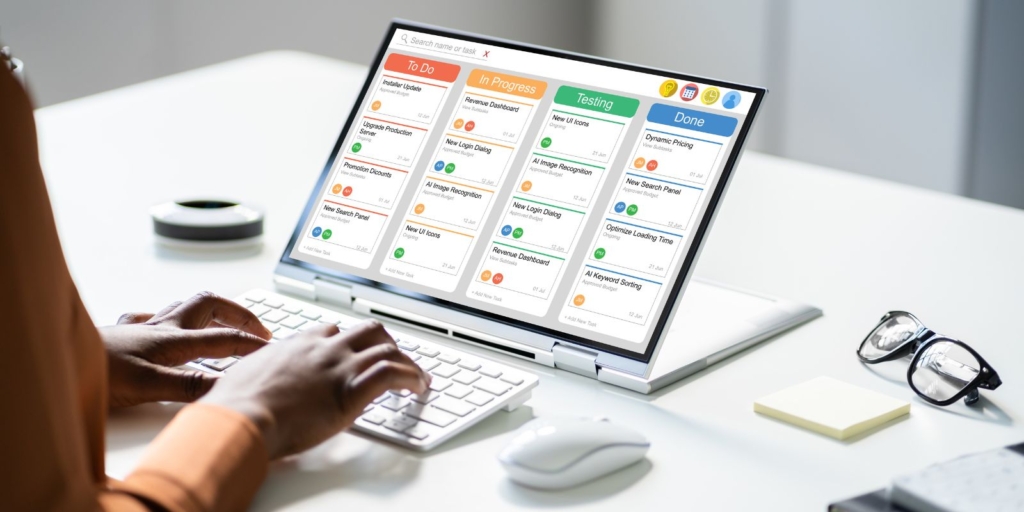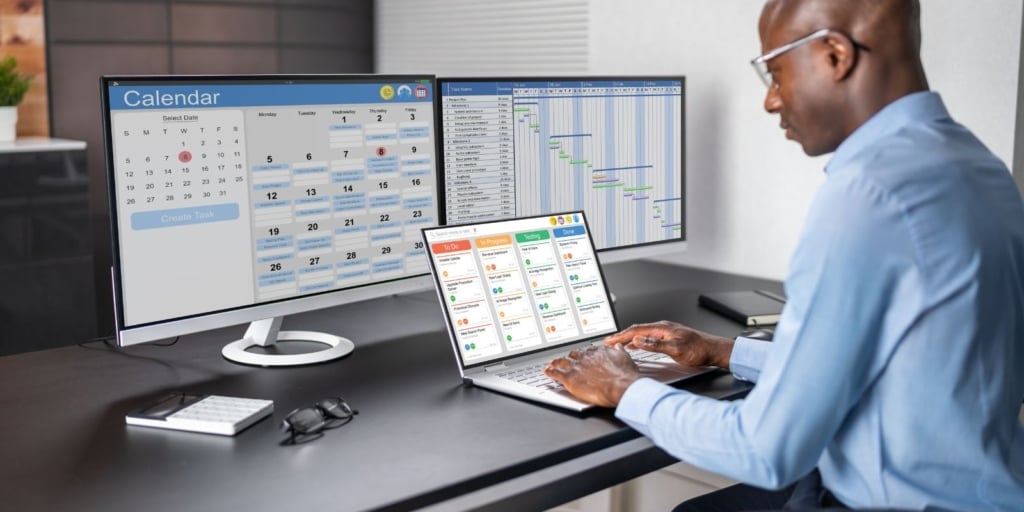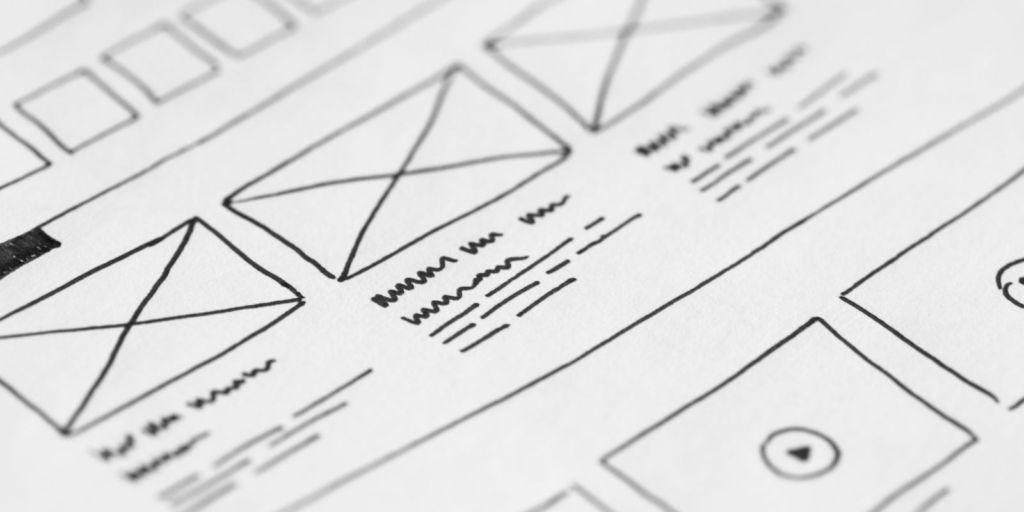GoTripod News / Software
Transformation from every angle
What to expect during the custom software development process
Custom software development can feel overwhelming, especially if you’re not familiar with the process. However, understanding the steps involved will help you stay in control and ensure you achieve the best outcome for you, your team, your business and your customers!

In this post we’ll walk you through what to expect during each phase of a custom software development project, so you can navigate your journey with confidence.
1. Project Discovery – Initial Consultation and Requirements Gathering
The first step in any custom software development project is understanding exactly what you need. You’ll often hear it referred to as ‘Project Discovery’ and it’s the first vital step in laying the crucial groundwork for a successful project.
It should involve all stakeholders and result in the development of a clear roadmap for the project.
And if this is already sounding a little daunting, fear not!
The selection of an experienced software development team, who understand the demands of today’s multifaceted business processes, will start paying dividends even at this early stage.

They really do play a pivotal role, even at this early stage. It’s so important that they have a clear understanding of your goals and the business problems you’re trying to solve.
But it’s also really important to have a good rapport with your software development team right from the start. You’re going to be working really closely with them throughout the project’s lifespan, so you need to select people you feel you can truly partner with.
At Go Tripod we really pride ourselves in this area. As well as having the development experience and the business acumen to create a tip top software platform for you, we’re a genial down-to-earth bunch who fit into just about any team.
Your chosen development team will kick off by conducting in-depth consultations to gather detailed requirements, which form the foundation for everything that follows.
During this phase, expect the following:
- Stakeholder Interviews: Developers will want to speak to key team members to clarify business needs, pain points, and expectations.
- Business Analysis: Make sure your software development team has someone with clear business experience or a defined project manager to ensure a comprehensive analysis is conducted to understand how the software should align with your business objectives. Put simply you’re looking for a team who can couple market trends with user behaviour and translate that into a successful digital product for your organisation.
- Goal Setting: Clear, measurable goals will be defined, helping guide the development process, assess success and form the basis on on-going monitoring parameters.
2. Planning and Proposal
Once the requirements are understood, the development team will draft a proposal and project plan.

These will typically include:
- Timeline: A rough schedule of development milestones and the overall project timeline.
- Budget: A detailed cost breakdown, including details of any stage payments or milestone triggers.
- Technologies used: Your software development team should provide details of the proposed technologies and platforms that will be used, such as programming languages, frameworks, and hosting solutions.
- Features List/Scope: A comprehensive list of features and functionalities of the software agreed upon during the requirements gathering.
This proposal serves as the go-to document for both you and your development team, ensuring a clear outline of the project’s scope (what’s included and, perhaps more importantly, what’s not!) and expectations moving forward.
3. Design and Prototyping
With a clear plan in place, the design phase can begin.
An experienced software development company will come into its own here.
Expect to see:
- Wireframes: These are basic visual representations of how your software will look, outlining the structure and layout. (Insert GT Example)
- Prototypes: More interactive models that allow you to test and visualize user flows. This stage is essential for user experience (UX) and user interface (UI) design, making sure the software is intuitive and easy to navigate.

You should be looking for a perfect marriage of aesthetics and performance here, to optimise both UX and UI and you should expect to be actively involved in reviewing and providing feedback to ensure the design meets your expectations.
4. Development
This is where the coding begins and the developers really get to work!
The development phase is often broken down into stages:

- Frontend Development: This is the visible part of your application that users interact with (UI/UX).
- Backend Development: This is the “behind-the-scenes” functionality of your software. It includes database interactions, server logic, and any integrations with other systems.
- Agile Methodology: Many developers use an Agile approach, working in short, iterative cycles called “sprints”. But whatever methodology your development team use, you should expect to regularly see progress and have the opportunity to provide feedback.
During this phase, you might not be involved in the technical details, but you should expect regular updates on progress.
5. Testing and Quality Assurance
Before the software is released, it should go through rigorous testing. This ensures that the final product is free from bugs and functions as intended.
Testing includes:
- Unit Testing: This is where individual components or modules of the software are tested for functionality.
- Integration Testing: This testing verifies that different parts of the system work together as intended and, equally, that any integrations with other platforms or systems are seamless.
- User Acceptance Testing (UAT): This is a critical phase, but exciting phase where you and your team get hands-on and test the software in real-world scenarios! Its importance should not be underestimated and you and other key stakeholders will need to be prepared to allocate sufficient time for testing and feedback during UAT.
6. Deployment
Once the software has passed all testing phases, it’s time for deployment. The moment of truth – Go Live – Launch!

The deployment process involves:
- Server Setup: Configuring the environment where the software will ‘live’. This might be a cloud-based system or an on-premises server.
- Data Migration: Moving data from old systems (if applicable) to the new software.
- Launch: Making the software live and accessible to users.
7. Training and Documentation
A key part of a successful software rollout is making sure users are comfortable with the new system. Research shows that the more comfortable users are with software the more successful it will be.
Expect:
- Training Sessions: The extent of the training will depend on the scope and complexity of the system. It may be as simple as a short remotely conducted ‘Teams’ session or it may involve on-site face to face sessions with key stakeholders and their teams facilitating hands-on training to familiarise them with the software’s features, benefits and workflows.
- Documentation: Detailed manuals or guides that explain how to use the software, troubleshoot common issues, and leverage its full potential.
Well-executed training and well written documentation will ensure a smoother transition and higher user adoption rates.
8. Maintenance and Support
Even after the software is live, the development process isn’t completely over. Maintenance and on-going support are critical to address any issues that arise post-launch.
This phase includes:
- Bug Fixes: Addressing any errors or bugs that come to light after the software is in use.
- Updates: Implementing new features or improvements based on user feedback and evolving business needs.
- Technical Support: Ongoing assistance to help with any technical issues or questions your team encounters.
A good development team will offer flexible support plans that suit your needs, from on-call support to regular maintenance updates.
Custom software development is a multi-stage process that requires collaboration, clear communication, and mutual understanding between your business and the team developing the software. By knowing what to expect during each phase — from initial consultation through to deployment and maintenance — you’ll be better equipped to ensure your project’s success.
And by partnering with an experienced development team and staying engaged throughout the process, your business will gain a powerful, tailor-made solution that aligns perfectly with your goals and sets you up for success.
At the top of this post we said we’d walk you through the process of navigating a custom software development project. Well, hopefully, we’ve helped a little in that regard and you have a clearer idea of what to expect.

But it doesn’t stop at a nice blog post for us. Helping our clients navigate bespoke software projects is what we do every day. Our business-minded developers have been doing it for over 15 years and we’d love to help you with your project.
So get in touch today and let’s see how we can build some beautiful software for you that will be impactful and help your business grow…
Simply email [email protected], call us on 0845 475 2487 or complete the form below.